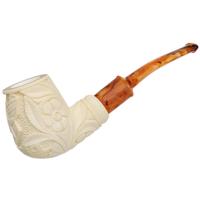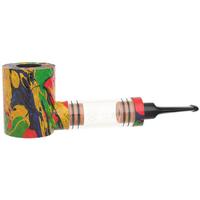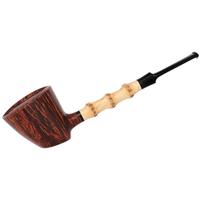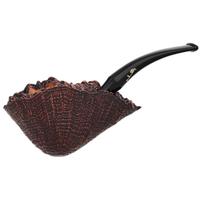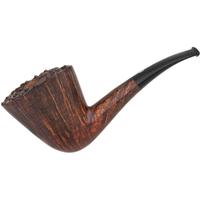Trust me in that case “back to black” is almost all the way home. The surface shows up black and looks a little bit porous.
I’ve done a few that way, most stems have been immediately ready for the polishing wheel. No sanding required. Just put on your white diamond compound or the blue one. Others needed lower grids compounds first. It just depends on how old the stem is, how good the quality of the ebonite, how thick the sulfur could built up and how deep the solvent has to act.
Compound bars are just sandpaper grit in a matrix of waxy stuff.
Meaning you are still sanding. The rubber doesn't care if the grit is on a wheel or attached to a backing sheet.
Doing it by hand offeres
MUCH more control. Something that is a Very Big Deal when retaining crisp edges is a Good Thing (which is always), and blurring/rounding edges is a Bad Thing (which also is always.)
All square, diamond, and faceted stems look like shit if their edges have been blurred/rounded. Buttons, too, if the original had edges. Also, the edges of the bite zone on any shape stem.
I've handled many four figure collectables that originally had "edged" stems and had lost their crispness from buffing instead of careful hand sanding. In some cases they couldn't be rescued (too much material gone), and a new stem had to be made.
Though the following stem had to be replaced anyway because of bite damage, a look at the original illustrates exactly what I'm talking about:
Bottom line: If sanded by hand to a high grit (1500 wet or dry used wet) very little "machine sanding" is required. A quick touch with some Monzerna medium will shine instantly. Another touch with fine will have it gleaming like glass.



